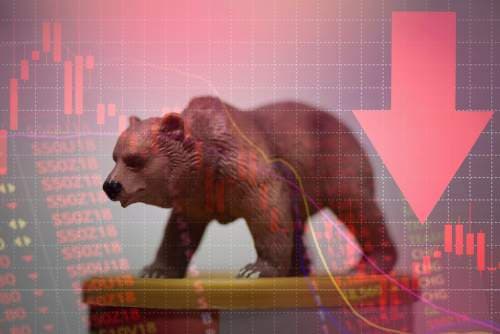
Leaders don’t make as much difference as most people think. The path of events is determined by deeper historical forces — the ‘primary trend’ in markets… and in politics.

An old Irish joke goes: “How do I get to Dublin?” The local replies, “Well, you don’t want to start from here. You can’t get there from here.”
We begin with where we are. USA Today:
US stocks end up, with S&P 500 at record.
But the S&P is not the only thing hitting records. Fartcoin, Butthole coin, Microstrategy, FartStrategy, $Trump, $Melania, $Lorenzo…even dead men are launching new wealth defying cryptos. John McAfee, who committed suicide three years ago, on X yesterday:
“I’m back with AIntivirus. An AI version of myself,” @officialmcafee’s post reads. “You didn’t think I would miss this cycle did you?”
Whatever else can be said about where we are… it’s a pretty strange place.
Our first priority is to avoid the Big Loss. If we can keep our wealth more or less intact, we can benefit from time, compounding, luck, our own wisdom… increasing (or decreasing!) with age, and occasionally, good research.
That brings us to our second priority. Going in the opposite direction from the Big Loss is the Big Gain. Today, we wonder where it is. We don’t think the Trump Team can get from where we are to where we want to go…but we don’t doubt that there’s money to be made somewhere.
To bring new readers – if there are any – up to speed, leaders don’t make as much difference as most people think. The path of events is determined by deeper historical forces — the ‘primary trend’ in markets… and in politics.
In democracies at least, the aspiring Caesar must connect to the soul of the masses… or he’ll be forever condemned to lead a more honest life.
This is not to say that he must obey the ‘will of the people’ once in office… but only that his rigging and conniving can’t be too far out of step with where The People think they want to go. These considerations usually give us the leaders we need — not to ‘do the right thing,’ but to carry out the mission given to them by fate.
This brief description of ‘historical determinism,’ of course, is not ‘true’ in any empirical way. It can’t be tested or proven. But it’s probably a good way to look at it. And it’s the best we can do… without having access to the mind of God.
Empires rise and fall. There are no exceptions. It doesn’t matter what people said… or thought. Or whether their leaders were good or bad. They could have polled the citizens of Rome in the 5th century. Most people might have answered, ‘yes, I’d like to keep the empire as it is.’ But so what? In 410, Rome was sacked. By 472, the western empire was history.
In 1980, gold was at its zenith… stocks at their nadir. A single ounce of gold could have paid for almost the entire 30 Dow stocks. The potential for a big gain in gold was slim; the risk of a big loss was obvious.
From a high over $800 an ounce, gold fell all the way to the ‘Brown Bottom’ in 1999. On May 7th of that year — with the price at $282.40 – Gordon Brown, Chancellor of the Exchequer (Sec. of Treasury), announced the sale of approximately half of Britain’s gold.
The timing couldn’t have been worse. After suffering the Big Loss, 1980-1999, with the price down 67%, Brown then locked in the loss by selling gold at its lowest price.
But if the Bank of England and other gold holders had already taken the Big Loss, we reasoned, there probably wasn’t much loss left to take. Instead, the action of the previous 19 years should be followed by an equal and opposite reaction over the next 19 years. A Big Gain, in other words. With the price of gold still under $300, and the Dow now selling for more than 40 ounces of gold, the Big Loss should now come to the stockholders, not the holders of gold.
That is what happened. Gold rose 10 times to today’s $2,770 price. Stocks went down; in gold terms, the Dow fell from over 40 ounces to today’s 16 ounces.
Historical determinism works for markets as well as politics. It didn’t matter who was president… or what investors thought… or said. The primary trend turned against gold in 1980… and against stocks in 1999.
And today?
When we look around today, it is clear today where the Big Loss is likely to come from. Once again, stocks are selling for record-high prices. Fortune:
Larry Summers warns bubbling asset prices are hitting levels of froth last seen prior to the financial crisis. In an interview with German business daily Handelsblatt, the former Treasury Secretary said bullish sentiment reminded him of the giddy days that preceded the 2008 financial crisis and the dotcom bubble at the turn of the century.
Not only are equity prices near a top, strange non-equities are having a field day too. CNBC:
Greenlight Capital’s David Einhorn thinks speculative behavior in the current bull market has ascended to a level beyond common sense. “We have reached the ‘Fartcoin’ stage of the market cycle,” Einhorn wrote in an investor letter obtained by CNBC. “Other than trading and speculation, it serves no other obvious purpose and fulfills no need that is not served elsewhere.”
And where’s the Big Gain?
Tune in next week for more…
Regards,
Bill Bonner




